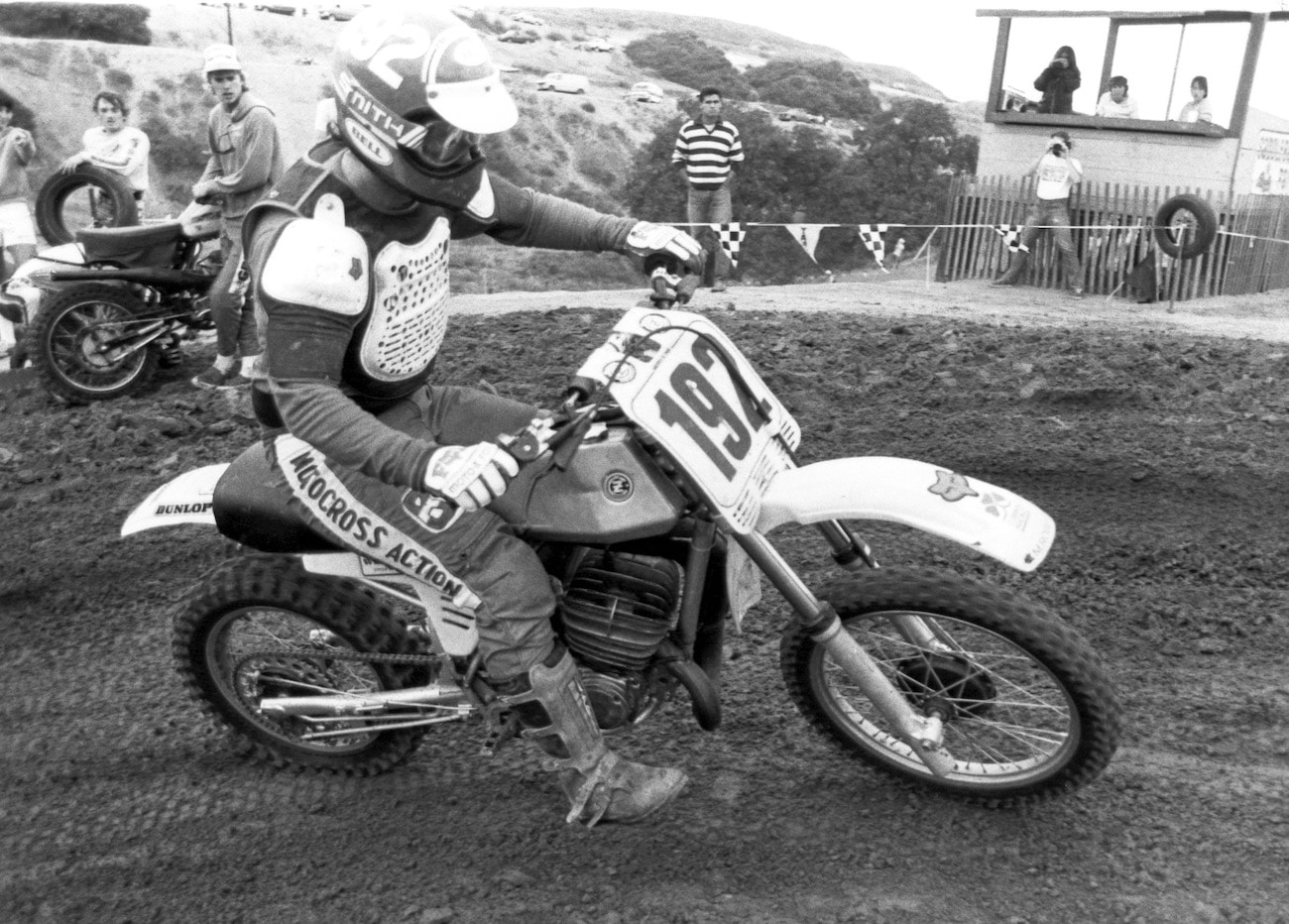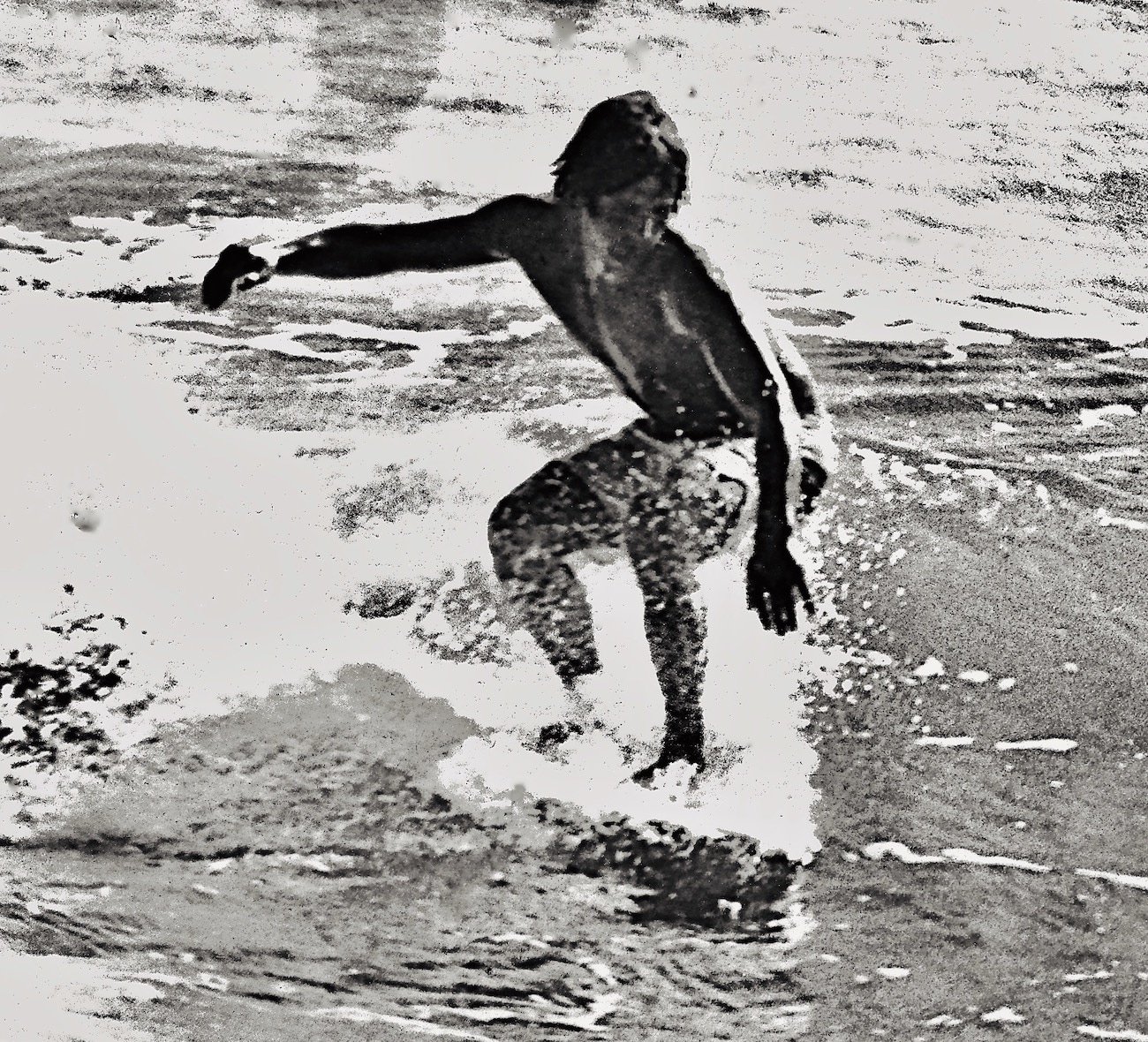BEST OF JODY’S BOX: “WHAT GOES AROUND COMES BACK AROUND…UNFORTUNATELY”
 Jody at Saddleback Park on his single-shock Czechoslovakian CZ 250.
Jody at Saddleback Park on his single-shock Czechoslovakian CZ 250.
By Jody Weisel
“Jody, you’ve got to try them. They are great. I know that it looks different, but until you try it you’ll never know how great they are,” said Fred Phalange as I stood next to him on the starting line.
I didn’t know what he was talking about. He was wearing so much goofy stuff on his body and had every aftermarket accessory bolted on his bike that he looked like a bric-brac shelf on wheels. His race wasn’t gonna start for a couple minutes and as he stared intently at me, I knew he was waiting for an answer. I just didn’t know about what. I took a wild guess.
“I don’t care how much performance can be gained,” I said pointing at his face. “I’m never going to stick one of those stupid nasal strips across the top of my nose.”
“Hey, these things work,” he defended. “They open up your nasal passages to allow more air in.”
“Fred,” I said with a know-it-all tone. “I don’t want to burst your bubble, but an athlete engaged in a cardiovascular sport does 99 percent of his breathing through his mouth, not his nose. You’ve got that Band-Aid three inches too high.”
“I wasn’t talking about that anyway. I was talking about these,” he said as he tugged at his riding pants. He was wearing those old-fashioned baggy freestyle pants that were laughed at back in the 1980s. I guess it’s true that everything that goes around comes back around eventually. “They are so comfortable,” he said, “that you don’t know you have them on.”
“Knowing I have them on isn’t the problem,“ I said.
“What is?” he asked.
“Other people knowing I have them on.” What I really meant to say was that any time a fashion trend dies, returns 20 years later and finally reaches all the way down to Fred Phalange—it should have stayed dead.
 Jody nose riding his 8-foot 11-inch Dewey Weber Tri-Plane through the shorebreak.
Jody nose riding his 8-foot 11-inch Dewey Weber Tri-Plane through the shorebreak.
And it’s true. When I was a kid in the 1960s I was a surfer. It was a little tiny sport with about 10,000 people worldwide doing it. I was one of them. It’s not that I was on the cutting edge, I just knew an old codger (who was 20) who surfed. He took me with him. Then the Beach Boys started singing about “Surfing USA” and every goon in my school was down at the beach the next weekend. I’m not gonna say popularity ruined surfing, but it became so cool to be a surfer that it wasn’t cool anymore. It became big business, big fashion and big-time. Today, millions of people do it.
Back in the early ‘80s I met a guy named Richard Cunningham. He had a bike shop down the street from my house. He made a weird type of bicycle called a Mantis. It was a mountain bike. It was like a motorcycle that you pedaled. And you could ride it in all the places where they had banned motorcycles. It was a tiny sport with about 10,000 people worldwide doing it. I was one of them. It’s not that I was on the cutting edge. I just knew a guy who was. Then, mountain biking became a big sport and every goon on my block had one in his garage. I’m not gonna say popularity ruined mountain biking, but it became so cool to be a mountain biker that it lost its spell. Today, about 20 million people do it.
TOO MUCH POPULARITY MAY NOT RUIN A SPORT, BUT IT CHANGES IT FOR THE WORSE. BY THE TIME A SHOE CLERK AT WALMART KNOWS ABOUT THE COOLEST THING — IT’S NOT COOL ANYMORE.
Too much popularity may not ruin a sport, but it changes it for the worse. A sport’s founding traditions, history, customs, values and beliefs go out the window. New people flood in, dilute the purity of the goal, abuse the value system and then move on to wreck havoc on the next fad. By the time a shoe clerk at Walmart knows about the coolest thing — it’s not cool anymore. But it doesn’t matter, because they are the least likely people to understand the allure of the next “in” sport. Once the word spreads, millions of nerds take up the sport, make it a household name, get it on cable TV, which attracts more spodes and then, when all those TV masses enter the sport they bring with them a host of unsavory beliefs, attitudes and ways of life from whatever sport they raped the year before.
Don’t get me wrong, I have nothing against baggy motocross pants, except that they are skateboard pants, borrowed from break dancers, who co-opted them from the hand-me-down rapper clothes, transplanted them to ski resorts (which they took over from snooty jump-suited skiers) and only then were they pawned off as the latest thing in motocross. I didn’t buy it then and I don’t buy it now that Fred Phalange is mongrelizing motocross gear.
Steve Stackable wanted me to take up hang gliding in the ‘75. Didn’t do it. Gaylon Mosier wanted me to go tubing in 1976. Didn’t do it. Warren Reid wanted me to take up archery in 1979. Didn’t do it. Mitch Payton wanted me to get into RC cars in 1980. Didn’t do it. Gary Jones wanted me to race off-road cars in 1983. Didn’t do it. Ed Scheidler wanted me to go high-powered target shooting in 1986. Didn’t do it. Paul Tracy asked me to drive shifter karts in 1992. Didn’t do it. Why didn’t I do it? I’m a motocrosser.
How can you tell if you are a real motocrosser? Ask yourself these questions: Do you have a callous on the inside of your thumb and a shiny spot on your elbow? Would you skip a big contingency race to go to a track with a smaller turnout, but longer motos? Do you know who John Roeder was? Do you think Carlsbad is in California or New Mexico? Which side of your pickup truck do you load your bike into? Do you know what color number plate backgrounds an Open bike ran? Do you hope that motocross becomes the next big sport?
“Jody,” said Fred looking down at his pants. “Do they really think they look that bad?”
“Fred, I’m not the fashion police, but before I cross over the edge I’d ask myself one question.”
“What’s that?” he asked.
“Would Roger DeCoster wear it!”






Comments are closed.